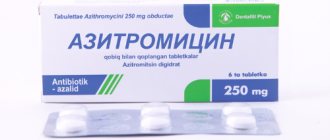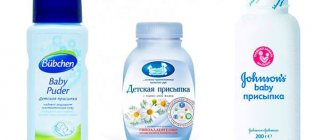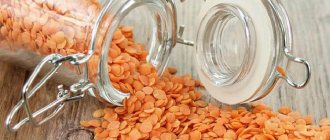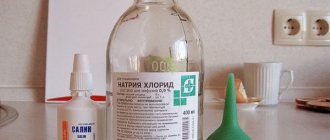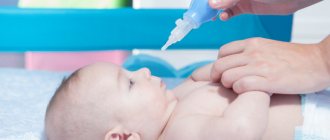Composition and mechanism of action
The drug belongs to the penicillins. In its action it is closest to Ampicillin, but is more universal.
Systemic antibacterial effect is achieved thanks to amoxicillin trihydrate. This substance is active against the following microorganisms:
- staphylococci;
- streptococci;
- meningococci;
- gonococci;
- peptococci;
- shigella;
- Klebsiella;
- clostridia;
- Proteus;
- salmonella;
- borrelia;
- intestinal, pseudomonas and hemophilus influenzae;
- chlamydia, mycoplasma;
- whooping cough sticks;
- campylobacter;
- rhinobacteria;
- spirochetes.
The antibiotic affects all pathogenic microorganisms that are sensitive to Ampicillin. It is effective against various anaerobic bacteria, but has no effect on viruses.
Amoxicillin for children can be used in the treatment of Helicobacter pylori, but only as part of complex therapy.
Amoxicillin for children affects the cellular structure of the bacterium, leading to its death. It accumulates in the blood within 1-2 hours after administration. It is excreted by the kidneys and liver within 6-8 hours.
Excipients in the composition depend on the form of release. The tablets contain starch, magnesium stearate, talc, titanium dioxide and hypromellose may be present. The granules contain flavorings (raspberry or strawberry) and sweeteners. The capsules contain magnesium stearate, cellulose, gelatin and dyes.
How does it affect the child's body?
The maximum concentration of amoxicillin in the blood is achieved 1.5-2 hours after taking the medicine. To achieve a lasting therapeutic effect, it is necessary to maintain a constant level of the active substance in the blood plasma, therefore it is important to take the drug at a certain interval (at regular intervals).
After entering the intestines, amoxicillin destroys the cell membrane of bacteria, as a result of which the microorganism dies.
To completely suppress the spread of pathogenic flora in healthy areas of the mucous membranes, the medicine should be taken for at least 5 days (without skipping).
Release form
The antibiotic Amoxicillin has 3 release forms.
- For the youngest patients, there are granules from which a suspension for children is obtained. The powder is available in 100 ml bottles.
- The capsules are intended for children of the older age group. Capsules may contain 250 or 500 mg of the active ingredient. Available in packs of 16 pcs.
- For older children, there are Amoxicillin tablets. They can be in a film shell or without it. The package may contain 12, 16 or 20 pcs. Dosage in tablets: 250 and 500 mg.
Age restrictions for admission
In pediatrics, Amoxicillin is prescribed from birth, but the tablets are not recommended for children under 5 years of age. If the medicine is prescribed to a child who is not yet five years old (for example, at 3 years old), then granules are used, from which a suspension is prepared.
The antibiotic Amoxicillin is recommended for use from the age of 3, but the pediatrician can prescribe it if the child is not yet 3 years old. This occurs in situations where infectious inflammation has developed quickly, reached a critical stage and there are serious complications.
Age restrictions also imply dosage adjustments. So, if adults require at least 250 mg of the drug per day, then the dose for a child is calculated depending on his body weight. In addition, children are not prescribed antibiotic capsules due to difficulty swallowing. A suspension has been specially developed for them, which is easy to swallow and does not cause pain to the throat if it is swollen during acute inflammation of the respiratory tract.
Pediatricians allow treatment with Amoxicillin in the form of a suspension for children from birth. However, it is unacceptable to give such medicine to babies under one year old without a doctor’s prescription. However, you should not treat children with Amoxicillin without consulting a pediatrician, even at an older age. If the child is already 5-6 years old, the tablet form of the drug can be used instead of the suspension.
Indications
The drug is intended for the treatment of bacterial infections of various organs - the respiratory tract, genitourinary system and gastrointestinal tract. The antibiotic is most often used for complications of colds. Amoxicillin in children is used for sore throat, pharyngitis, laryngitis, tracheitis, bronchitis, pneumonia, otitis media, sinusitis, and sinusitis. It can be prescribed for whooping cough. The antibiotic quickly relieves acute symptoms and reduces the recovery period.
Amoxicillin for otitis in children is prescribed by an ENT specialist if the disease is accompanied by a strong inflammatory process and purulent discharge.
Quite often, Amoxicillin is used for intestinal infections in children, salmonellosis, dysentery, typhoid fever, enterocolitis and peritonitis. And also for diseases of the genitourinary system, namely cystitis, pyelonephritis, urethritis and endometritis.
Amoxicillin for children is prescribed as part of complex therapy for infectious skin lesions, for example, leptospirosis, erysipelas or bacterial dermatosis.
Storage conditions and shelf life
To ensure that Amoxicillin does not lose its effectiveness, it is advised to keep it away from moisture and direct sunlight, and the optimal storage temperature range is 15-25 degrees Celsius. It is important that such medication is not easily accessible to children. The shelf life of an unopened bottle is 3 years. If a suspension has already been made from granules, such liquid medicine can be stored for only 2 weeks.
To maintain effectiveness, the medicine should be kept away from direct sunlight and moisture. The optimal temperature for its storage is the range from 15°C to 25°C. Children should not have free access to Amoxicillin.
An unopened package of granules has a shelf life of 3 years, but after dilution, the drug can be stored for no longer than two weeks. The shelf life of capsules is 3 years, and tablets, depending on the manufacturing company, are 2-4 years.
On prescription.
Over-the-counter sales are prohibited.
Price
The price of capsules for preparing suspensions varies from 106 to 177 rubles.
Contraindications
Unlike Ampicillin, the drug has fewer contraindications:
- Infectious mononucleosis;
- lymphocytic leukemia;
- penicillin intolerance;
- allergic reaction to antibiotics (you cannot take the medicine without an allergy test);
- acute renal or liver failure;
- bronchial asthma and other allergic diseases;
- dysbacteriosis;
- children under 3 years of age.
Ampicillins and penicillins belong to the same group. If the first treatment did not bring results or caused negative manifestations, then children should not take Amoxicillin. The reaction will be identical.
Despite the fact that in the instructions for use the optimal age for treatment is 3 years, in pediatrics the antibiotic is used from an earlier age.
Penicillinase and clavulanic acid are irreconcilable enemies
The ability of a wide range of microorganisms to calmly resist the action of amoxicillin was discovered during clinical trials. English pharmacists from the Beecham development company began an active search for an “antidote” to the harmful penicillinases that nullify the effectiveness of antibiotics.
At the end of the 70s, a solution was found. Clavulanic acid and some of its compounds have been shown to be able to prevent the destructive effects of enzymes. These substances firmly bind penicillinases, forming a stable complex with them, and enable amoxicillin to work.
The complex with clavulanate is capable of affecting a much larger number of pathogenic microorganisms than a pure antibiotic. I would like to emphasize that the combination of amoxicillin with alavulanic acid is a new drug that is produced under different trade names.
One of the most famous so-called protected drugs is amoxicillin, which is produced by the Glaxo concern. By the way, this company is a follower of the famous Beecham, who developed both Amoxicillin and its complex with clavulanic acid.
All unprotected antibiotics containing one component remain vulnerable to the action of beta-lactamases. Therefore, I would like to once again warn against a rash decision to start self-treatment with antibiotics.
Each group of antibacterial agents has its own characteristics that are important to consider. And only a doctor can prescribe an antibiotic that will bring healing.
Instructions for use and dosage of Amoxicillin for children
At what age is the product allowed? Amoxicillin can be used for children from one year of age. Children under one year of age should choose a safer remedy for treatment.
The dosage of Amoxicillin 250 mg can cause adverse reactions in infants; it is not worth risking its health.
The antibiotic is intended for oral use, that is, inside. It can be taken before or after meals, but it is better to give preference to the latter option, as the load on the gastrointestinal tract is reduced.
The course of treatment is up to 12 days. The duration depends on the type and severity of the disease. In general, therapy should continue for another 2-3 days after the symptoms of the disease disappear.
Amoxicillin for children in tablets
Amoxicillin tablets or capsules for children should be swallowed whole and washed down with plenty of water. They should be used from the age of 3 years. The dose at one time is 250 mg, that is, 1 tablet of 250 mg or 1/2 500 mg.
The medicine is used 3 times a day.
For children 10-14 years old, a single dose is 500 mg. This is 1 capsule or tablet with a dosage of 500 mg. For children over 14 years of age, the dosage is the same as for adults. This is 750 mg 3 times a day.
Amoxicillin for children: suspension
How to give Amoxicillin to children in granule form? It is necessary to prepare a suspension (some parents call it syrup). You should get 100 ml of medicine. There is a mark on the bottle that indicates the volume of liquid. In 2 doses you need to pour boiled water at room temperature. Shake the bottle thoroughly so that no powder remains at the bottom.
After 5 min. you can take medicine. Before each use, the bottle should be shaken and stored in the refrigerator for no more than 14 days.
The dosage of Amoxicillin for children under 2 years of age is determined depending on the baby’s weight. The kilograms need to be multiplied by 20, you get a single dose of antibiotic.
5 ml of the finished suspension (one scoop) contains 250 mg of the active substance.
On average, a child over 2 years old should be given 125 mg of the substance (2.5 ml of suspension) at a time. The frequency of administration is 3 times a day. It is better to give tablets to children over 5 years of age, as the dosage reaches 250 mg.
To measure the required amount of suspension, you must use a measuring syringe.
Characteristics of the drug
- Absorbed by 93% when taken orally;
- the maximum level in the blood is reached in 1–2 hours;
- penetrates into internal organs and tissues, overcoming the histohematic barrier;
- destroyed by the enzyme penicillinase (beta-lactamase);
- half-life is about 1.5 hours;
- partly metabolized;
- up to 70% is excreted through the kidneys, the remainder is excreted in bile.
The chemical composition of the antibiotic Amoxicillin contains active trihydrate and additives: tal, magnesium stearate, gelatin, E 133 brilliant blue, E 122 carmoisine, E 110 orange yellow, yellow iron oxide, titanium dioxide.
Not all types of tuberculosis bacteria are equally susceptible to the effects of Amoxicillin; there are also those that are insensitive to its influence.
Is it possible to give antibiotics to children?
In recent decades, in order to expand the range of drugs for treating children, antibiotics with an anti-tuberculosis effect such as Amoxicillin have been successfully used.
The characteristic features of the course of childhood tuberculosis must be taken into account in order to cure the child without wasting time.
At an early age, tuberculosis is more severe than in adults. This is due to the fact that the immune system of children’s bodies is not able to immediately limit infectious foci.
Mycobacterium tuberculosis is resistant to many classical drugs and has a significant affinity for them. That is, during therapy, a rapid spread of tuberculosis infection throughout the entire body may develop.
The antibiotic Amoxicillin is the preferred reserve drug for the treatment of childhood tuberculosis, affecting aerobic and gram-positive bactericides.
Amoxicillin can be recommended in the initial phase of an integrated approach for acutely progressive stages of tuberculosis, as well as for long-term therapy of children with multisensitivity to classical anti-tuberculosis drugs.
The antibiotic Amoxicillin is used to increase the effectiveness of treatment for patients of all age categories with resistance to or intolerance to other drugs. This drug spreads easily through cell walls, showing activity against penicillin binding protein.
The following forms of tuberculosis strains are moderately sensitive to Amoxicillin:
- M. tuberculosis;
- M. bovis;
- M. fortuitum;
- M. kansasii.
For children, the antibiotic Amoxicillin is prescribed for the treatment of mild forms of tuberculosis in a hospital setting.
Therapy is carried out using the same methods and principles as for adults and is usually well tolerated, since damaged lung tissue in a child regenerates much more actively.
Classification of childhood tuberculosis:
- initial stage;
- tuberculosis of the lymph nodes;
- miliary;
- focal;
- infiltrative;
- tuberculoma;
- fibrous-cavernous;
- cirrhotic;
- pleurisy (including empyema);
- disseminated;
- bronchial, tracheal tuberculosis.
Interaction with other drugs
Children's Amoxicillin reduces the therapeutic effect of most antibacterial drugs, namely macrolides, sulfonamides, and tetracycline group drugs. On the contrary, the use of cephalosporins, rifampicins and vancomycins achieves greater effectiveness.
Diuretics, NSAIDs and Allopurine increase the concentration of amoxicillin, which can cause toxic poisoning. The antibiotic, in turn, enhances the effect of indirect anticoagulants.
The effect of antibacterial treatment worsens if laxatives and antacids are used simultaneously. You should not combine this drug for children with Metronidazole, as the negative effect on the liver increases.
special instructions
During the course of therapy, special attention must be paid to the condition of the liver and kidneys.
Patients with hypersensitivity to penicillins may experience cross-allergic reactions with cephalosporin antibiotics.
If during a course of Amoxicillin there is a need to treat mild diarrhea, it is better not to use drugs that reduce peristalsis. You can use Attapulgite or kaolin containing medications.
Treatment continues for 48-72 hours after the disappearance of external symptoms of the disease.
Use during pregnancy and lactation
Use is permissible only if the benefit to the mother outweighs the risk to the fetus. Since penicillins penetrate into milk and can irritate the baby’s stomach and intestinal mucosa, the drug should be used with caution during lactation.
Use in old age
In the elderly, the dosage is similar to that recommended for adult patients; no adjustment of the amount of medication is required.
How to give Amoxicillin 125 to children
The daily dosage for children is divided into 4-6 doses and is prescribed by age relative to body weight:
- from 1 month - 150 mg per 1 kg;
- up to 1 year - 100 mg per 1 kg;
- 1-4 years - 100-150 mg per 1 kg;
- from 4 years - 1-2 years.
The daily dosage for children is prescribed according to age relative to body weight.
The duration of treatment is determined by the severity of the disease (from 5 to 20 days). For chronic diseases, therapy may take several months.
To prepare the suspension, add cooled boiled water to the bottle with powder up to the mark, then shake well. Before use, you will need to shake the suspension again. The dosage is made using a measuring cup.
Use for renal impairment
If kidney function is impaired, Amoxicillin is prescribed in combination with clavulanic acid (the drug Amoxiclav). This combination blocks the growth of bacterial infection.
Side effects
Side effects of Amoxicillin in children more often appear when the dosage is exceeded or prolonged use. The most common allergy symptoms are:
- skin rashes;
- allergic dermatitis;
- Quincke's edema;
- hives;
- rhinitis;
- anaphylactic shock.
If you take Amoxicillin for too long, your child will develop headaches and seizures. Neurological disorders such as insomnia, increased agitation and anxiety are possible. Unpleasant consequences of antibacterial treatment, such as stomatitis, dysbacteriosis, and diarrhea, may develop.
An overdose is fraught with stool upset and vomiting. If the dose is exceeded, you should immediately rinse your stomach and take the sorbent.
Overdose
Any of the drugs existing on the pharmacological market has a number of contraindications, and Amoxicillin is no exception. Taking it can provoke:
- nausea and vomiting;
- stomatitis and erosion of the mucous membranes of the mouth;
- dizziness;
- headache;
- sleep disturbance;
- tachycardia;
- joint pain;
- allergies;
- dysbacteriosis;
- eosinophilia;
- Sometimes convulsions appear.
Long-term use of Amoxicillin can cause nausea and vomiting
Due to the ability of antibiotics to lead to dysbiotic complications in the gastrointestinal tract (diarrhea, abdominal pain, increased gas formation, etc.), pediatricians recommend combining Amoxicillin with pribiotics for young patients. As a preventive measure, Linex, Bifiform, Normobact L and other drugs are used simultaneously with an antibiotic for 10-14 days (more details in the article: how to give Linex to an infant or newborn?).
Proper nutrition and walks in the fresh air will help to avoid negative consequences. It is also necessary to maintain an optimal drinking regime so that a sufficient amount of urine is produced during the day. If the patient suffers from diseases of the gastrointestinal tract, then it is better for him to use the drug in the form of granules for the preparation of injection solutions.
If the patient has been taking Amoxicillin for a long time, then he should start taking antifungal drugs. At high doses of medication, patients should periodically have their blood and urine tested.
Side effects from taking Amoxicillin are quite rare. If a person has a weak immune system or the dose of the drug is exceeded, then the likelihood of their occurrence increases significantly. Patients with an overdose should undergo gastric lavage, give activated charcoal and immediately seek medical help.
The main contraindication to taking an antibiotic (and pinicillins in general) is an allergy to it or to the components of the drug, as well as:
- pregnancy and lactation;
- severe form of renal failure;
- Infectious mononucleosis;
- bronchial asthma.
In general, Amoxicillin is well tolerated by patients, but sometimes they may experience nausea or vomiting, runny nose or conjunctivitis during treatment. Rarely, the antibiotic also provokes fever and stomatitis with tachycardia. Mild allergic reactions in the form of a rash or itchy skin are possible.
If the instructions for use are not followed, the patient may experience symptoms of overdose: nausea, diarrhea and neurotoxic reactions. In this case, you should immediately rinse the patient’s stomach and prescribe symptomatic therapy.
Analogs allowed for children
There are substitutes for Amoxicillin for children based on the active substance:
- Amoxicillin Ecobol. These are tablets of 20 pcs. in the box. Dosage 500 mg, costs 140 rubles.
- Amoxiclav. This is a more effective analogue of Amoxicillin for children, since the composition, in addition to amoxicillin, contains clavulanic acid. Available in the form of tablets and powder for suspension, which can be used for newborns. Cost 120 rub.
- Augmentin. Also contains clavulanic acid. The suspension costs 160 rubles. Can be used for children over 3 months.
- Flemoxin Solutab. Applicable from 1 year. Available only in tablet form in dosages of 125, 250 and 500 mg. Cost 20 pcs. 500 mg each 380 rub.
- Ecoclave. Contains clavulanic acid. This is one of the most expensive means. Powder for preparing a suspension of 25 g costs 300 rubles.
The cost of Amoxicillin depends on the form of release. For 12 tablets of 500 mg you need to pay 140 rubles, 16 capsules are cheaper, about 100 rubles. The suspension is in the same price range.
Despite the relative safety of Amoxicillin for children, do not forget that it is an antibiotic. It disrupts the natural microflora, so you need to take care of its restoration before digestive problems arise.
Author: Oksana Belokur, doctor, especially for Mama66
When is an antibiotic prescribed?
The drug is used as a means of antibacterial therapy. Amoxicillin is a broad-spectrum antibiotic and belongs to the group of semisynthetic penicillins. The medicine is an analogue of ampicillin, but when taken orally it is characterized by better bioavailability. According to the instructions for use, the drug has an antibacterial effect against:
- aerobic gram-positive bacteria – Staphylococcus spp., Streptococcus spp.;
- gram-negative – Salmonella spp., Neisseria meningitidis, Klebsiella spp., Shigella spp., Escherichia coli.
Compound
According to the instructions, Amoxicillin has the main active ingredient - amoxicillin trihydrate, which is in a dosage corresponding to the release form. Auxiliary components give the tablets additional properties, a familiar appearance, and increase shelf life. The composition, in addition to the trihydrate form, includes:
- calcium stearate;
- lactose monohydrate;
- magnesium stearate;
- polysorbate;
- talc;
- potato starch.
Release form
The instructions for use stipulate the forms of release of the medicinal product. They depend on the purpose and differ in dosage - the amount of active substance. Amoxicillin is available in the form:
- powder for intravenous injection – 500, 1000 mg;
- coated tablets – 0.5, 1 g;
- dry matter for preparing a suspension – 125, 250, 400 mg – for children;
- soluble tablets for dilution - 0.125, 0.25, 0.375, 0.5, 0.75, 1 g;
- capsules – 250, 500 mg;
- ready-made suspension – 5 mg – 150, 250 mg;
- dry composition for intramuscular injection - 500 mg bottle.
According to the instructions for use, Amoxicillin has a bactericidal and antibacterial effect. A broad-spectrum antibiotic inhibits transpeptidase, changes the synthesis of peptidoglycan during growth and division, and causes cell destruction. Amoxicillin when taken:
- quickly absorbed;
- has a half-life of 1.5 hours;
- penetrates into organs and tissues;
- excreted unchanged by the kidneys, partly with bile.
Amoxicillin is the drug of choice for the treatment of meningitis. This disease is deadly for children of any age, so parents should not doubt the advisability of using antibiotics.
Important! Before starting treatment with Amoxicillin, it is recommended to conduct a test to identify the pathogen and determine its resistance to this type of drug.
Amoxicillin is the drug of first choice in the treatment of meningitis. The disease is deadly for children of any age, so parents should not doubt the advisability of using antibiotics.
Attention! Before starting treatment with Amoxicillin, it is recommended to conduct a test to identify the pathogen and determine its resistance to this type of drug.
Amoxicillin for children is an antibacterial medicine with a broad spectrum of action. It is essentially a semi-synthetic penicillin that is suitable for treating bacterial infections. The components of Amoxicillin are absorbed and fixed in the blood a couple of hours after administration. The medicinal properties of the drug are resistant to the effects of gastric juice.
The drug Amoxicillin does not allow bacteria to multiply, destroying their cellular structure.
Children's diseases are often accompanied by bacterial complications. Also, the pathology may initially be microbial in nature. To treat this condition, separate medications are needed - antibiotics. With their invention, medicine made a colossal breakthrough. After all, it is now possible to cure diseases that were previously considered fatal.
Today's article will tell you about how the antibiotic Amoxicillin is used. Instructions (for use in children), reviews and features of the use of this medicine will be presented to your review. You will learn about substitute drugs and get acquainted with the results of treatment with such drugs.
Quite often in pediatrics the drug Amoxicillin is used for children. The instructions for its use must be carefully studied before starting treatment. Even if the medicine is prescribed by a competent and experienced specialist, do not be lazy to read about it. The summary of the drug is quite extensive. It describes all indications and contraindications. The application diagram is also indicated in detail.
Amoxicillin is a broad-spectrum antibiotic. It belongs to the group of synthetic penicillins. The medicine begins to act immediately after entering the body. The active substance of the same name, amoxicillin, inhibits the synthesis of the bacterial membrane. As a result, the pathological cell is destroyed and its death occurs.
The medicine has a bactericidal effect. It is effective against various microorganisms: streptococci and staphylococci, Escherichia and Shigella, salmonella and so on. The product fights pathogens that cause gonorrhea and meningitis, stomach and intestinal ulcers, and anaerobic microorganisms. And this is not the entire list. As you can see, the instructions present the spectrum of action of the drug “Amoxicillin” (for children) as very wide.
The minimum dosage of Amoxicillin is 125. Instructions for use for young children recommend choosing exactly this amount of the active substance. Older children are prescribed a drug that is available in doses of 250, 500 and 1000 milligrams. In hospitals, the drug can be used in the form of an injection solution to treat patients.
The substance amoxicillin (for children) may have different trade names. The instructions say that this medicine is quite effective and safe. Therefore, based on the main component, a lot of drugs are produced with different names. The following can be highlighted:
- "Flemoxin";
- "Amoxisar";
- "Gonoform";
- "Amosin";
- Danemox;
- "Grunamox";
- "Ecoball" and so on.
Amoxicillin-based drugs are often prescribed in combination with another active ingredient, for example, Amoxiclav, Flemoklav and others. Remember that even structural analogues of a drug must be selected by a specialist. Self-use of antibiotics is unacceptable.
Indications for treatment
The instructions for using the medicine “Amoxicillin” (for children) are recommended by a doctor. As you know, the drug is a broad-spectrum antibiotic. This means that it is effective in treating many bacterial diseases. The medicine is powerless against viruses of various types. So, the instructions indicate the following situations as indications for the use of Amoxicillin tablets and suspension for children:
- acute as well as chronic diseases of the lower respiratory tract (bronchitis, pneumonia, lung abscess);
- infections of the ENT organs (otitis media, pharyngitis, sinusitis, sinusitis, tonsillitis);
- chronic and acute diseases of the biliary tract, intestines and stomach (cholecystitis, intestinal infections, peritonitis);
- genitourinary diseases (pyelonephritis, cystitis, urethritis, bacteriuria);
- infections of the skin and soft tissues, accompanied by the discharge of pus;
- sepsis and so on.
It is recommended to use the drug after a preliminary examination. If time permits, you must first do a bacteriological culture to determine the sensitivity of microorganisms to a given antibiotic. But, as practice shows, often when you get sick you can’t hesitate. Therefore, pediatricians prescribe antibiotics at their discretion.
What other information does the instructions for use tell the consumer about Amoxicillin? Tablets are prescribed to children only after 10-12 years of age. Before this age, capsules and pills are contraindicated. If treatment is necessary, preference should be given to a suspension. Despite this, there is a structural analogue of the drug Flemoxin.
Contraindications to the use of the drug will be hypersensitivity and allergic reaction to penicillin antibiotics. The medication is not prescribed for infectious mononucleosis, lymphocytic leukemia, or severe gastrointestinal diseases. It is forbidden to take the antibiotic for children with hay fever, bronchial asthma, liver dysfunction, or diseases of viral etiology.
In some cases, the drug provokes adverse reactions. What does the instruction say about this about the antibiotic “Amoxicillin” (suspension for children)? Medicine in liquid or tablet form can cause allergies. This side effect is considered the most unpleasant and dangerous. It manifests itself as a rash, hives, itching, swelling or shock.
Other side effects include nausea, diarrhea, dizziness, and general malaise. With such manifestations, therapy should be continued.
As you have already learned, medicine in the form of pills is prescribed to children after 10-12 years of age. At this age, the dosage of the drug corresponds to an adult. If a child weighs more than 40 kilograms, then he is prescribed 250-500 mg of the active substance per dose. In severe cases of the disease, it is recommended to increase the dose of the drug to 1 gram. Frequency of application – 3 times.
Useful video about Amoxicillin
List of sources:
- https://medi.ru/instrukciya/amoksitsillin-sandoz_6441/
- https://www.rlsnet.ru/tn_index_id_222.htm
Author
Oksana Belokur
Pediatrician
In 2012 she graduated from the Medical Institute of Sumy State University. She received a higher education in the specialty “Pediatrics” and qualified as a doctor. In 2012-2013, there were treatment and preventive activities at the Sumy Regional Children's Hospital. In 2013-2015 worked as a local pediatrician at Children's Clinic No. 2. I am currently on maternity leave. In my free time I do embroidery and knitting, and study English.
Share
Alcohol compatibility
There is no compatibility between the drug and ethanol-containing drinks. During treatment with Amoxicillin, it is better to abstain from alcohol: both substances are eliminated through the kidneys and liver. When drinking alcohol, the liver begins to produce enzymes to metabolize ethanol. The combined use of Amoxicillin and alcohol increases the toxicity of the latter and can lead to ethanol poisoning, which severely irritates the mucous membrane of the stomach and small intestine. In addition, alcohol weakens the antibacterial effect of the drug, so their simultaneous use is excluded.
Conditions for dispensing Amoxicillin 125 from a pharmacy
On prescription. The prescription must indicate the Latin name of the medicine (Amoxycillinum) and the release version.
Can I buy it without a prescription?
Since 2021, the list of antibiotics that can only be sold by prescription has been supplemented with Amoxicillin, so it is almost impossible to purchase it freely, without a prescription.
Price for Amoxicillin 125
This is a relatively cheap drug: the price range is from 40 to 200 rubles. Analogues can cost much more.
Reviews
Parents' opinion
On the Internet you can find many positive reviews from parents about Amoxicillin. They like the following about the drug:
- affordable price;
- wide spectrum of antimicrobial action;
- pleasant taste of the suspension, which most children like.
Negative reviews are due to the fact that the antibiotic has contraindications and can provoke unwanted reactions in the child.
Doctor Komarovsky's opinion
A well-known pediatrician believes that only a doctor should prescribe antibiotics for a bacterial infection. The doctor should select the drug depending on the child’s weight, the severity of the infection and the sensitivity of the pathogen to a specific drug. To prevent microorganisms from developing resistance to the antibiotic, you must strictly follow the treatment regimen prescribed by your doctor; you cannot reduce the dose of the medication yourself or shorten the course of treatment.

